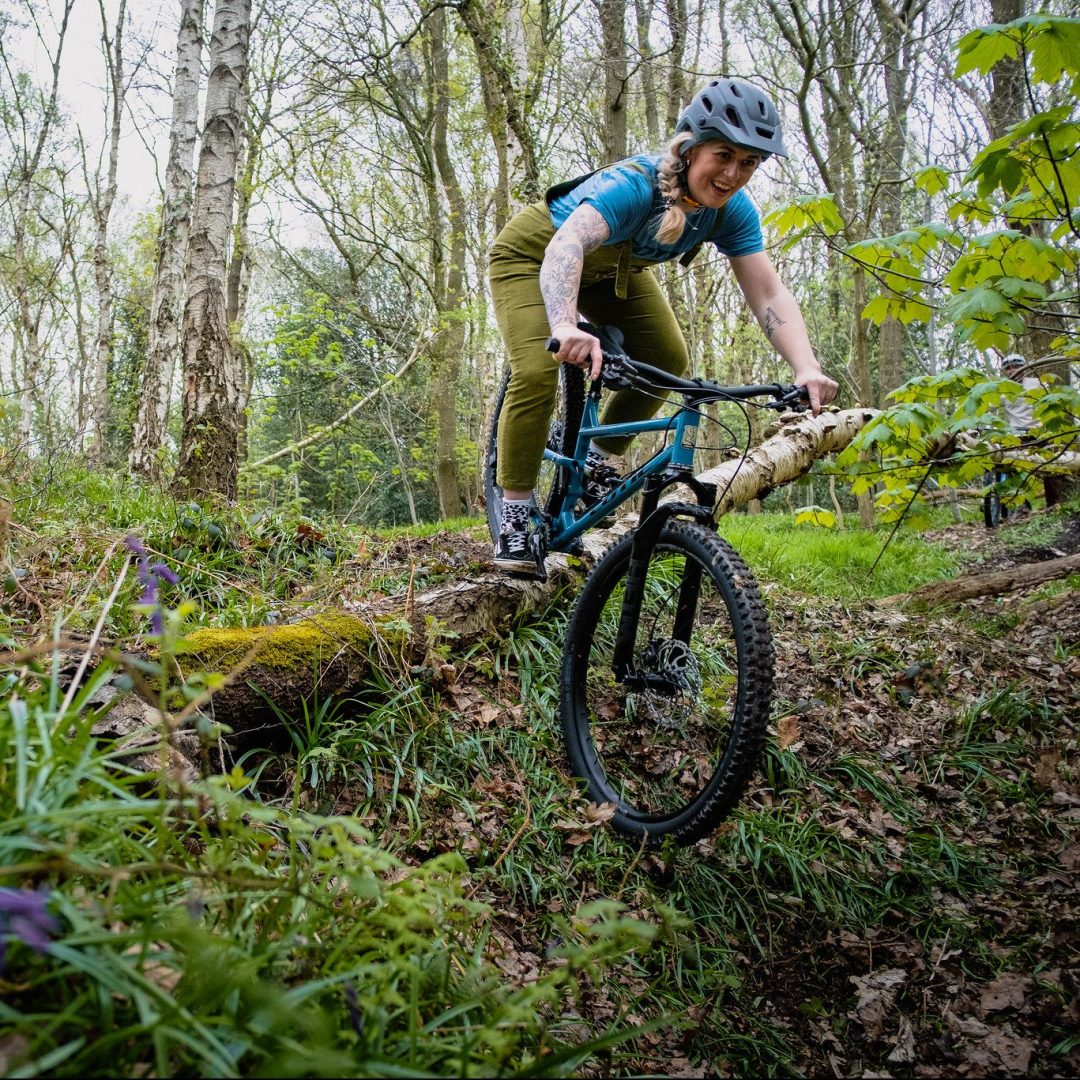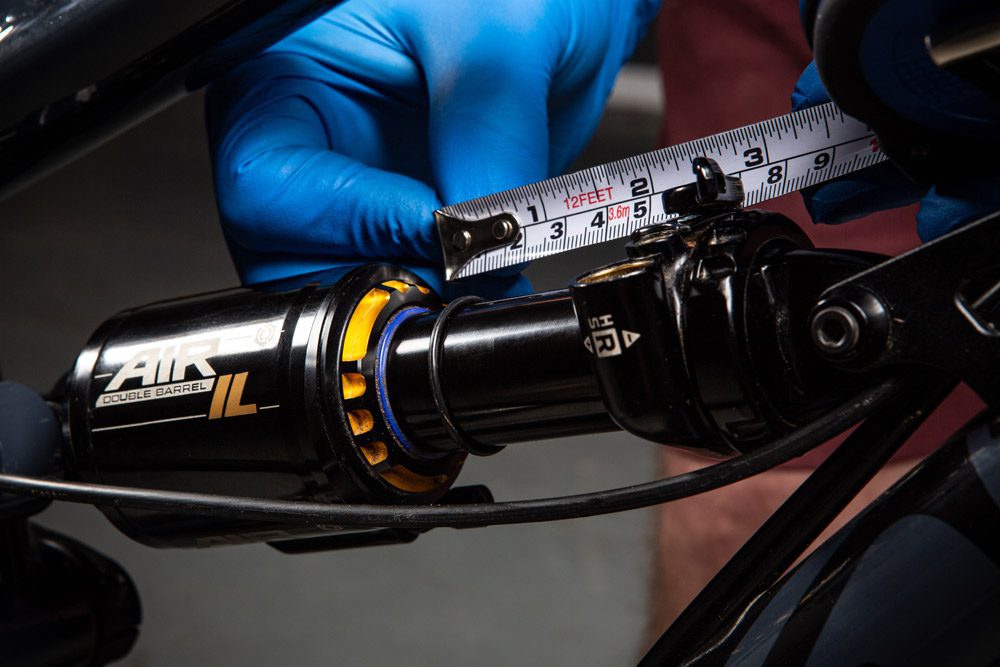The true goal of tuning your suspension is to improve the amount of control you have over your bike. In other words, it’s to improve your own ability to maintain a course through turns, while braking, hitting jumps, riding different surfaces, and in a multitude of weather conditions. (Avoid riding in the rain unless on a closed course).

A bike’s suspension is comprised of many different parts including:
If set up correctly all of these components work together to optimize your bike’s handling and control.
Taking the time to understand how these components function individually and as a unit will greatly improve your riding experience.

Setting sag is the first & most important step in setting up suspension. Sag is directly affected by the weight and positioning of the rider. The amount of Sag references the amount of suspension travel that compresses due to the rider’s weight. The desired amount of sag usually ranges from 25-35% of the Stroke Length.

Don’t attempt to make any damping adjustments or changes until you have set sag
When measuring sag on a coil shock; the bottom out bumper can be used to achieve an accurate measurement – You can also measure the reduced eye-to-eye distance. – Everything you need to know about rear shocks
Compression Damping is important as it affects traction, plushness, pedal efficiency and bottom out resistance. While tuning compression, consider the shape of the obstacle, the size of the obstacle and how fast you hit the obstacle.
This distinction between two different types of compression force is why all Cane Creek Rear shocks have both High Speed Compression and Low Speed Compression adjustments.

Applicable to IL, Tigon, Kitsuma Rear Shocks
(-)Reducing HSC allows the bike’s suspension to compress very quickly through its travel. This helps keep the tires in contact with the ground for as long as possible – maintaining traction and control while riding over “square-edge” roots and rocks
(+)Increasing HSC enables the shock to absorb a lot of force – this becomes essential while controlling big impacts as it helps the shock resist harsh bottom outs.
Applicable to IL, Tigon, Kitsuma Rear Shocks
(-)Reducing LSC softens the bike’s suspension, allowing the bike’s shock to be more active over small bumps, gradual bermed corners and rollers.
(+)Increasing LSC stiffens the shock for a greater transfer of power from the rider to the bike – resulting in increased efficiency in pedaling and pumping.
Rebound Damping controls the speed at which your shock extends after being compressed.
Similar to compression damping, your shocks rebound also affects traction, plushness, pedal efficiency and availability of usable travel. It is important to recognize that while tuning compression is based more on the shape of the obstacle, the size of the obstacle and how fast you hit the obstacle – Rebound speed is directly related to the amount of travel used. The more the spring is compressed the more energy it stores and therefore the more force it applies to the shock while it extends.

Applicable to IL & Kitsuma Rear Shocks
(-) Reducing HSR Helps to create a lively “poppy” feel while taking off jumps and pumping down the trail – By allowing the shock to extend faster after being compressed deep into its travel.
(+)Increasing HSR Slows down the extending forces the spring applies while under extreme conditions – such as during a bottom out, compressing on the lip of a jump or smashing through a rock garden. This adjustment helps the rider reduce the feeling of being bucked forward.
The HSR functionality on Tigon was moved internally to be able to offer a more consistently controlled HSR damping effect, to better manage the added return spring force of the RAMP Tube. If you ride Tigon, you can disregard this adjustment step.
Applicable to IL, Tigon, Kitsuma Rear Shocks
(-) Reducing LSR Helps the shock return back to full travel faster – This helps resist packing up while riding over bump after bump. Reducing LSR can help increase the sensation of “plushness” as well as increase traction over washboard style obstacles.
(+)Increasing LSR Acts to help stabilize the bike’s frame by slowing down the speed at which the shocks returns back into position – This helps maintain traction and decrease feedback to the rider while climbing technical trails.

I want more pop/lively | Shock is not recovering quickly enough | Reduce HSR (-)
I want to reduce bucking | Shock is recovering to quickly | Increase HSR (+)
Too Firm, not getting full travel | Shock is not compressing quickly enough | Reduce HSC (-)
Bottoming out too frequently | Shock is compressing to quickly | Increase HSC (+)
Harsh on small bumps | Shock is not active enough | Reduce LSC (-)
Too much pedal bob | Shock does not have enough pedal platform | Increase LSC (+)
Shock is riding deep in its travel & packing up | Shock is not recovering fast enough | Reduce LSR (-)
Feels bouncy, bike wallows | Shock is rebounding too fast | Increase LSR (+)

Monday: 10:00 am – 5:00 pm
Tuesday – Thursday: 10:00 am – 5:00 pm
Friday: 10:00 am – 5:00 pm
Saturday – Sunday: Closed